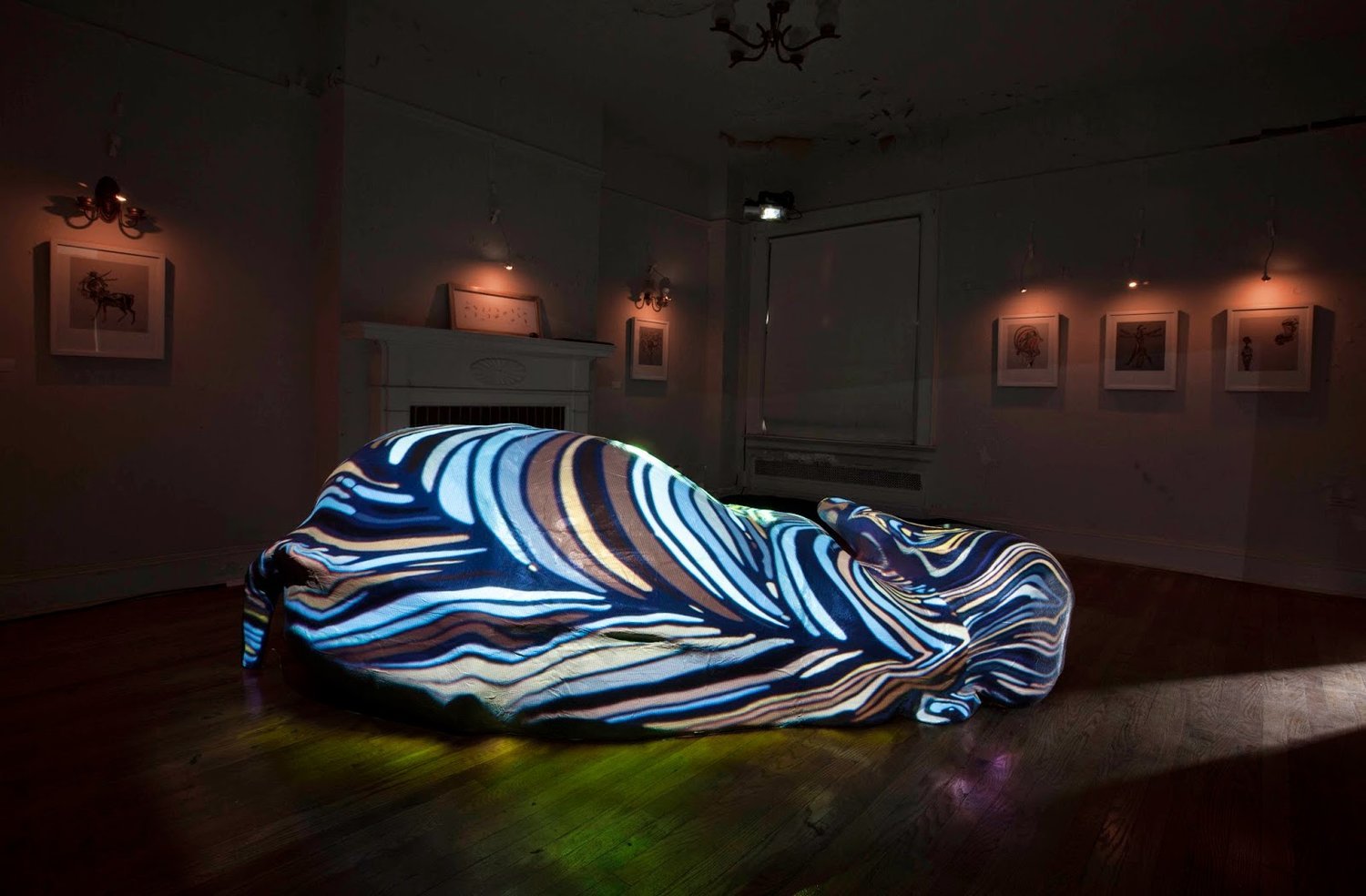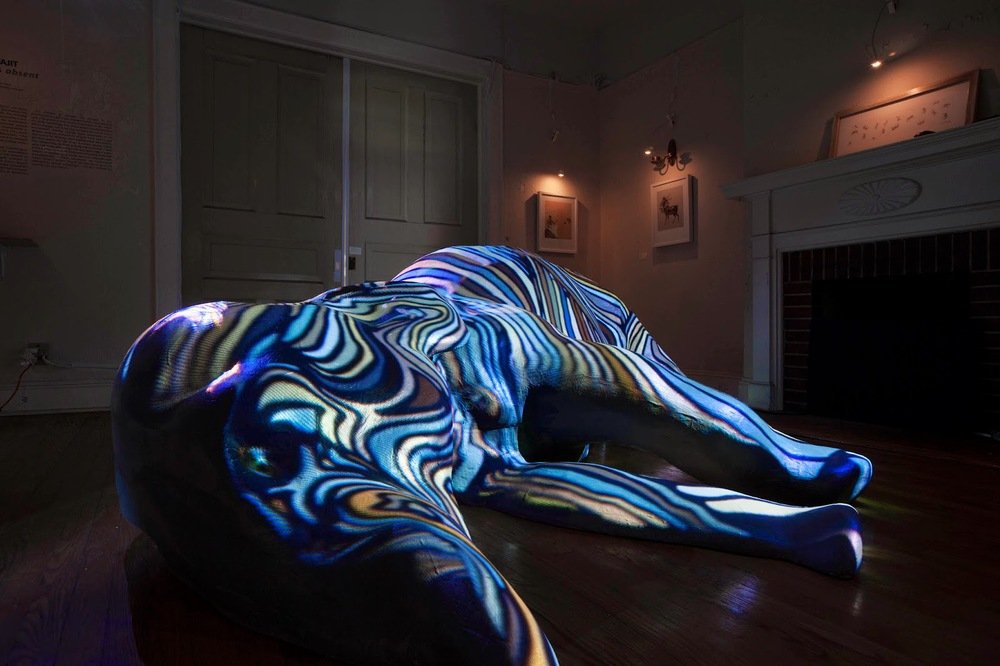elephant in the room
Video projection on fiberglass, with two simultaneous projectors on opposite sides, continuous loop
5.4’ ft x 10’ ft x 2.5’ ft
ARTIST NOTE
the animal is absent (elephant in the room) is a video sculpture that explores the human perception of change. It is a meditation on time, and a world that is bound by it. Taking the form of a fiberglass sculpture of an Elephant lying down, hand drawn images are projected and mapped onto the body acting like the skin of the Elephant. The conventional narrative of time is distorted and stretched beyond human-time, creating an ever-changing and evolving object whose intrinsic character remains imperceptible to our senses.
My ecological curiosity was first sparked researching on climate change while pursuing a MA in International Political Economy. The lack of political will seemed to suggest there was a deeper ideological problem of perception towards the environment that science, despite its numerous findings, was not able to change. Somewhere along this path of translation in a “hyper-technological” society, meaning gets lost in information, as Baudrillard would argue. Our inability to perceive the changes in our environment creates a gap between humans and nature (if such a thing exists) that forms the epicenter of the narrative so far. Technology, to a limited extent has allowed us to detect changes, but it has also reshaped the nature of our environment thereby causing more uncertainty in an already uncertain atmosphere of fear. There exists a gap that cannot be filled by mere mathematical abstractions, and thus enters the role of art in today’s society. Rather than categorizing my work as being environmental, I think what I am really addressing is the ecological mind of today, which is different from thinking environmentally in the 20th century. It requires us to break our most unquestionable presuppositions - What constitutes our environment today? What is nature? Should the concept of nature be extended to include technology? - and thus reshape our mind for the 21st century.



